Hello everyone! Just a heads up I am trying a new feature within Substack, where I can share a preview of my exclusive (paywall) posts to all subscribers. So if you are confused where my other FROM THE VAULT posts are, feel free to subscribe and enjoy tons more content.
Okay, where was I? So, I was coming out of the one-year post-grad illustration course at Sheridan College, I was starting to get my first few paying gigs making comics, and had just printed / distributed Lost Dogs. I was definitely taking steps in making some sort of career within comics, but it wasn’t enough to quit my day job. I was still working in the kitchen at La Ha, but the paying jobs like UR Magazine let me cut down to only two shifts a week. And the extra time I had off was, naturally, filled by spending more time at my drawing desk.
My drawing desk…whenever I think of the time drawing Essex County I think of the work space I had back then. It was really small and compact, but man I loved drawing there. Lesley-Anne and I were renting the main floor of a house in Toronto’s west end, and as I mentioned in the last entry, we shared this small area at the back of the house as our joint work spaces. I was tucked in beside the sliding glass doors so it had incredible indirect light. There was literally only just enough space to squeeze my drawing desk between the glass doors and wall and I had one bookshelf over it with my ever-growing collection of comics on it.
I really wish I has pictures of this space now. Compared to the studio I have now it wasn’t much, but it makes me happy to think back to that workspace. And that’s mostly how I felt drawing Essex County…happy. For the first time in my adult life here was finally a sense of calm and happiness running under my life. Looking back now with perspective I can see that a few things contributed to this. First off I was finally starting to have some success with comics. And by success I guess I mean that I was no longer working all alone, with no feedback, and no validation. I was no longer hoping and praying that what I was doing had some value. I had gotten the Xeric Grant, I was proud of Lost Dogs and felt like it was a leap forward creatively. My time at Sheridan, and the success I felt in that program, had empowered me to keep going. And a few paying gigs, as small as they were, didn’t hurt my confidence either.
Secondly, my personal life was growing more and more stable. I didn’t have to work at the restaurant as much, and that freed me to live even more of a creative life. I was also finally on medication for my depression and anxiety. I know that medication is not the answer for everyone, but for me it really changed everything. My art hero, David Lynch, says that “negativity is the enemy of creativity” and I truly believe this. The idea of the tortured artist is a bunch of bullshit in my opinion. When I was tortured I was just tortured and mostly couldn’t think straight, let alone be creative. The more confidence I got with my work, and. the more content I felt in my life, the more it freed me up to be creative and to make more comics. And this is where Essex County came from. A new calm and perspective.
Lost Dogs was a step forward in that I finished a longer form work and told a complete story that felt cohesive. Lost Dogs had a lot of emotion and energy. But It was also very dark. Most of the comics I had made since 1999 had been some version of dark, horror-edged stories. I had a longing to do something calmer, quieter and more personal. Creating more personal work, means looking at your real life and telling honest stories. Instead of trying to create new worlds, I decided to look back on my life, my childhood, and on the place I came from.
I was really inspired by the Canadian cartoonist Seth. His book, It’s A Good Life If You Don’t Weaken was a revelation to me.
Seth’s book was semi-auto-biographical and follows him around Toronto as he seeks out a cartoonist from another era. His personal quest brings him back to his home in rural Ontario. There is an incredible sense of melancholy and a quiet intimacy to the story that really struck a chord with me. Just seeing an artist draw places in Toronto and small town Ontario that I also recognized from my own life inspired me to do the same. There is an almost indescribable feeling of idealized “Canadiana” to Seth’s work especially Clyde Fans, that I loved.
So all this was definitely swimming in my head as I was searching for what to do after Lost Dogs. I started drawing farm scenes in my sketchbook that were right out of where I grew up. And a kid in a cape and mask also popped up. This kid was clearly me. I mean this was where I grew up and I used to run round with a cape and mask like this all the time, lost in my own imaginary world.
I still didn’t quite have the story yet, but I knew I was closing in on something. I don’t know what the final leap was. I do remember getting a more sci-fi inspired idea about this kid in a cape on the farm after some apocalypse. He was all alone struggling to survive and befriended the only other survivor, a hulking ex-hockey player. Together in the “costumes” they fought zombies etc. I don’t think I got too far with this idea because, again, it felt like I was hiding the truth behind some make-believe story. Then it hit me. What if that was just a make-believe story? What if the kid and the big hockey guy got lost in this imaginary world to escape the mundane and painful realities of their everyday life on the farm?
Sometime around here I had also gone home to Essex County for a visit and dug up a box of some of the old comics I drew when I was a kid. I brought these back to Toronto with me, not thinking much of them. But as this new story was forming, I had this idea to actually put some of my own childhood comics into the story as the kid’s comics. That was the final piece.
That was it. I stripped back all the sci-fi & genre stuff and made that the kid’s imaginary game. As soon as I did that, it all clicked and Lester and Jimmy and Uncle Ken were born.
As soon as I started drawing the book, it just felt right. It felt like going home. Growing up, all the flat fields and long dirt roads with hydro lines strung down them seemed boring and I couldn’t wait to get to the big city. But now I could look back on that stuff with a lot more perspective and see the beauty in it. The sparse harsh landscape really suited my drawing style too. It felt so natural to draw.
I am often asked how autobiographical Essex County is. And really it is mostly fiction. Lester is definitely a surrogate for me, a kid lost in his comics and his imagination, longing for something else. But his circumstances in the story are total fiction. I wasn’t an orphan, I wasn’t an only child and I had two loving parents and never befriended a hulking ex-hockey star. But what was real was the drawings of locations from around Essex County and the farm I grew up on. And I would steal little personality traits from people I knew growing up and combine them into different characters. Like all fiction you work the truth in there, but not always in a one for one sort of way. It all gets mixed up and filtered through the story in different ways.
When drawing Essex I had no idea if it would be published or not, and I also had no idea that it would grow into a trilogy of interconnected books. I was really just drawing this one, simple story of Lester and Jimmy. And I was drawing it for myself, not for a publisher. I drew the whole story in the Winter/Spring of 2006 and it came together pretty quickly. I think the original version, originally just called Tales From The Farm, was only about 50-pages. When I finished it I know it felt like nothing I had done yet. It felt more “real” and grounded in my own life and way more personal. I knew I had found my “voice” and the kind of stories I wanted to tell.
I had won the Xeric Grant already and couldn’t apply for that again. And I still wasn’t making any real money from comics. There was no way I could afford to print up the book professionally on my own. So I did what I had done with Ashtray, I used Kinkos and photocopied 50 or 70 copies of the story and mocked up a cover, stapling them together myself. This book was thicker than Ashtray so I had to “bind” it too. I had no idea how to do this, so I got the idea to use cloth hockey tape, the kind you use to tape up your hockey sticks, as a sort of cloth binding for these photo-copied versions.
Like I said, I think I printed up 50 or 70 copies of this early version. I can’t exactly remember the amount. I did a few small press shows, like Canzine, selling them and also did a “launch event” at a local bar where some of my friends bands played and we sold copies at a table. Another local cartoonist, Zach Warton was also launching his own comic and we did this event together. I think maybe a dozen people showed up.
After that, I knew that if I wanted to get the work out there in any significant way I would need to finally take the leap and submit it to a real publisher. I knew that Tales From The Farm was not the kind of book that the “big” publishers did. So I targeted my submission to smaller publishers who did the kinds of books that inspired me. I submitted Tales From The Farm through the mail (we didn’t just send digital copies via email back then) to Drawn & Quarterly, Top Shelf, Image and Fanatagraphics. I mailed my photo-copied, hockey-taped version and then…I waited.
I had finally gotten my first computer around his time as well. This was important to note because this meant I finally had email! And, eventually, I got email responses to my submission of Tales. Fantagraphics responded positively but passed on the book. The fact that the people who published The Hernandez Brothers even bothered to look at the book, and didn’t outright hate it, was a thrill to me. Eric Stephenson, from Image Comics, also responded. This is ironic now, because I work exclusively with Image, but back then I didn’t know Eric and he didn’t know me. But the other Eric, Eric Larsen had read the book and really liked it. Image wanted to publish Tales From The Farm!
I wonder how and if things would be different if I had gone with Image for Tales? I’ll never know because at the same time Chris Staros and Brett Warnok from Top Shelf also read Tales and responded. They had liked the book, but Chris passed on it, giving me some really smart notes on how I could improve and deepen some of the characterization, particularly between Lester and Uncle Ken. I took those notes and did another pass on Tales, adding 20 or so pages that really brought their relationship to life. Then I re-submitted the book to Top Shelf. I think Chris was impressed that I actually took his editorial notes and used them to improve the book. But Top Shelf was still on the fence about publishing the book. Brett later told me that he was on a road trip with his then wife, and Tales was amongst a few other submission in the back seat. Something about it must have struck her because she read it as they drove and she told Brett he should publish it.
So Brett advocated for it and that pushed Chris off the fence enough to agree to publish it. I received Top Shelf’s agreement to publish the book at the same time as Image. Suddenly it wasn’t a matter of if Tales From The Farm would be published but rather with whom. I had a choice between two incredible publishers and I went with Top Shelf because I had formed an editorial relationship with Chris and it was his feedback that pushed Tales to another level.
The book would be published in Spring 2007 and as we prepped that, I had already started working on the next volume. I didn’t quite know how the next story connected yet. I wanted to really dive into hockey. As I’ve said in the past I had fallen back in love with playing hockey and following the sport again. I had touched on it in Tales From The Farm with the character of Jimmy but wanted to go deeper. Emboldened by the personal success of Tales I felt that I could make the first truly great graphic novel about hockey. I was drawn to this character…an old man full of regret who had once been a hockey player in the golden age of the 50’s-60’s in Toronto but was now in his last days back home on the farm and looking back on his life.
As Top Shelf helped me prepare Tales for publication I started working on this new story which I already knew would be longer and more layered than Tales and told Chris about it. I knew that the old man in this new story would somehow connect to Jimmy and that this story would be set in the same farming town so I boldly proposed a trilogy of Essex County books to Chris, and to his credit, he took a leap of faith with me and agreed to publish the whole trilogy without even really knowing what it would be.
There are a handful of people in my life that I owe so much to. People who came into my life at exactly the right time and helped me achieve the next level of success with my work and career. Maurice Vellakoop and Joe Morse at Sheridan College were two of these people and later in my life Bob Schreck and Karen Berger at Vertigo would also be these people. But between them, at the start of everything were Chris and Brett. And they will always feel like family because of it.
I should note that around this time I also attended my first non-local comic book convention. Lesley-Anne and I went to New York as exhibitors at the MOCCA comics festival. There I met Chris face-to-face for the first time and cemented our plans for Essex. And I also met another artist that would come to be a big part of my life…Matt Kindt.
Matt picked up Lost Dogs one day when he was walking around the show. And I picked up his early graphic novel. Pistol Whip from his table. That night we both read each other’s books in our respective hotel rooms and the next day at the show we sought each other out and exchanged mutual admiration. We both knew we had found another cartoonist with the same influences and same storytelling styles. In short we knew we had found a kindred spirit and a friendship was formed at that MOCCA show back 2006 that is still going strong today (though now I think Keanu Reeves may be Matt’s real bestie).
So things were rolling. I was really going to be published. I was making connections in the bigger comics world and I was starting on the second part of Essex County that felt like it would be the best thing I ever did, (and maybe still is), Ghost Stories.
So let’s pick it up there next time and I’ll go deep into drawing and publishing Ghost Stories and attending my first San Diego Comic Con as a professional with Top Shelf. From there things really started to take off.
Until next time, keep your sticks on the ice.
-Jeff

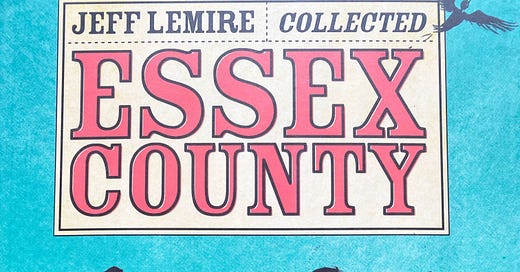



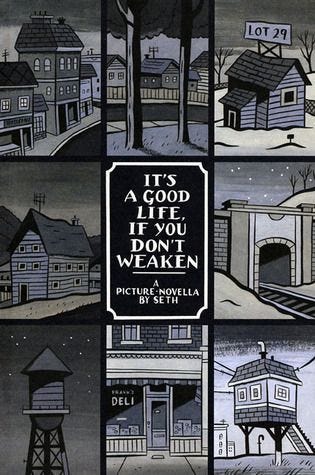
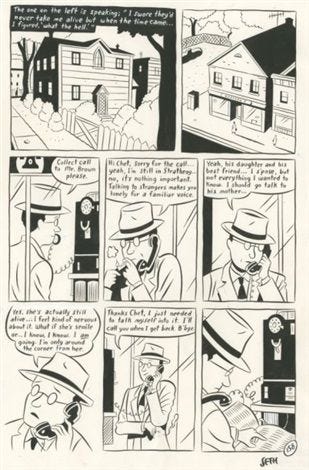


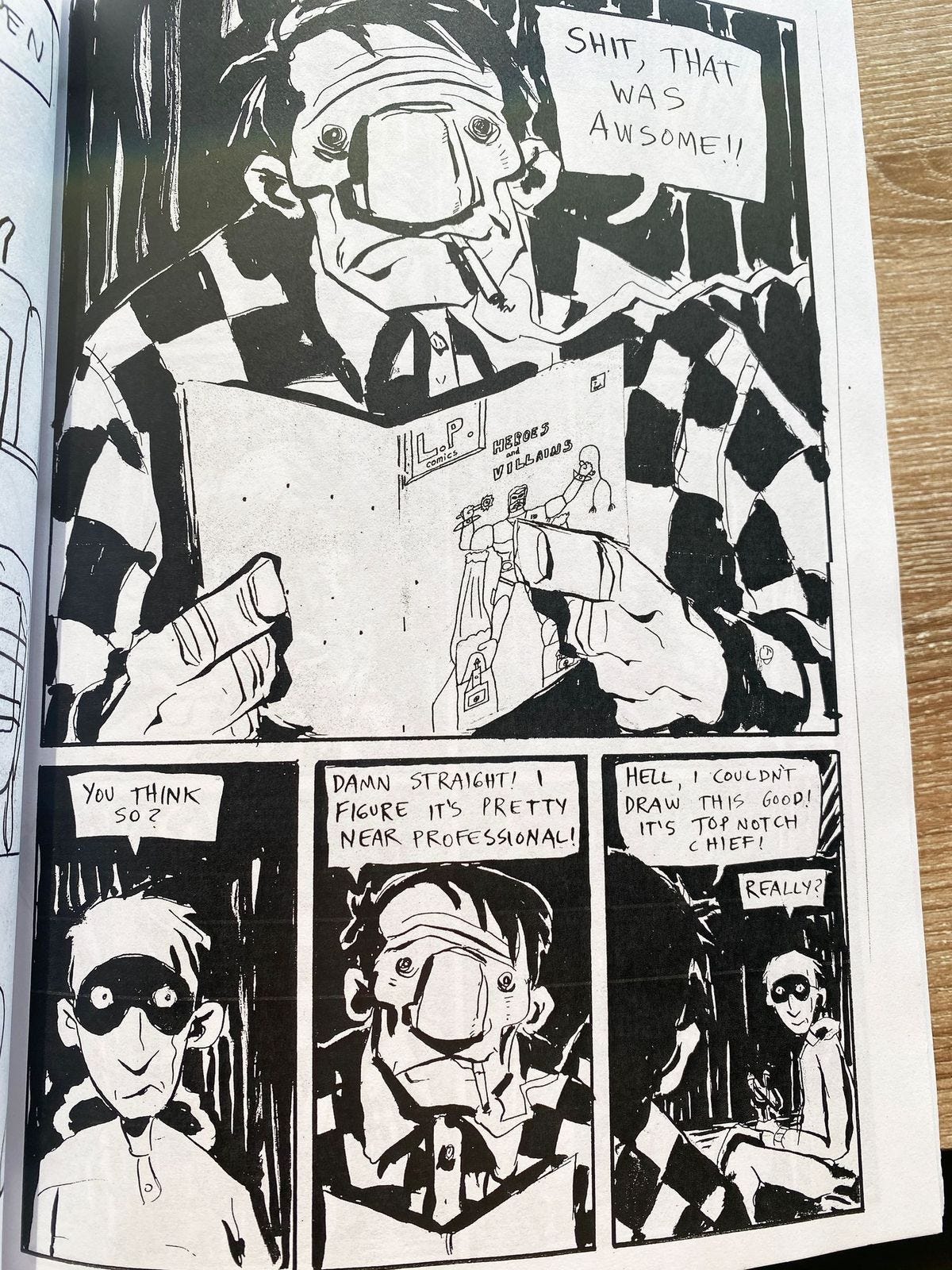

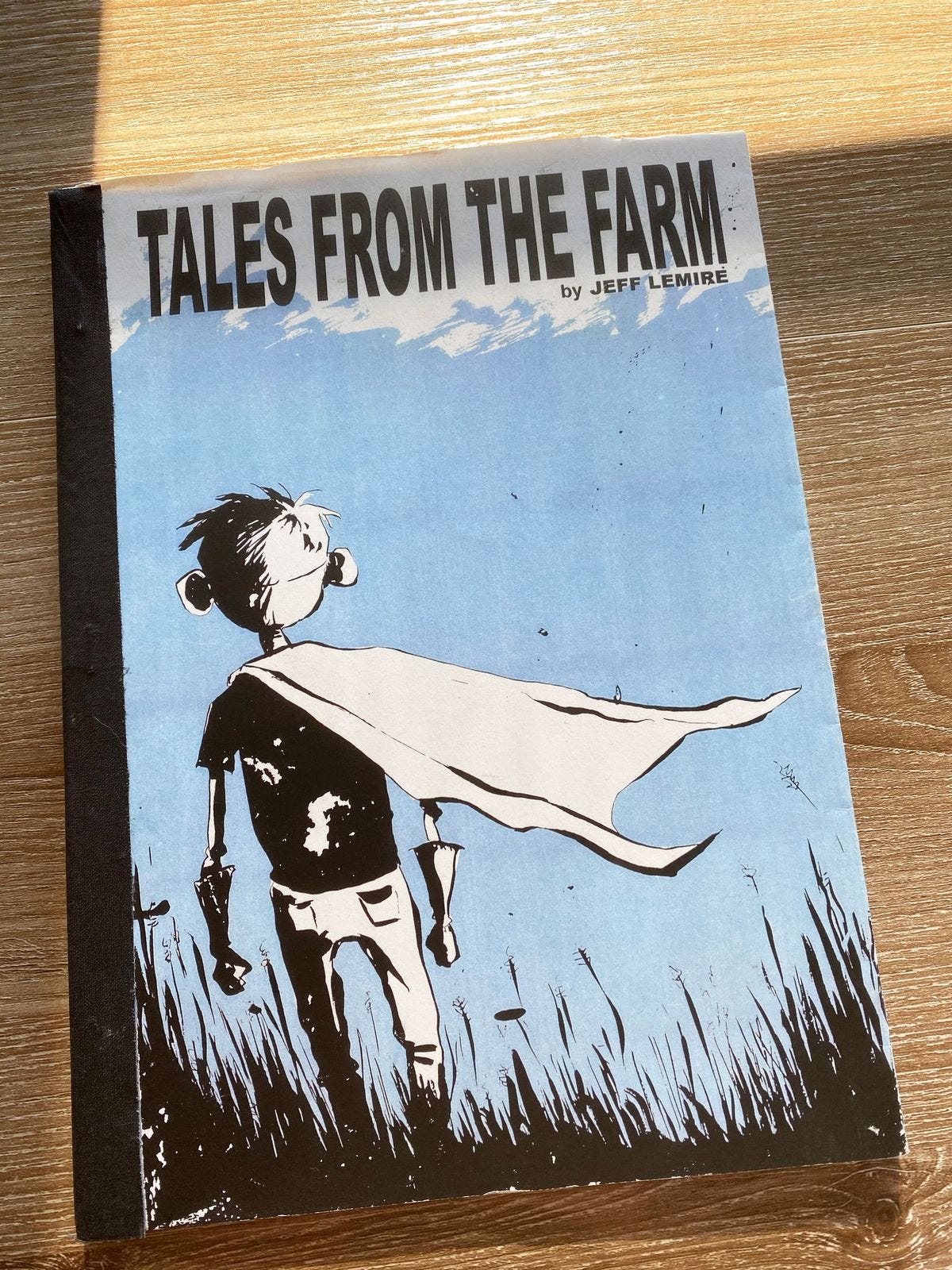


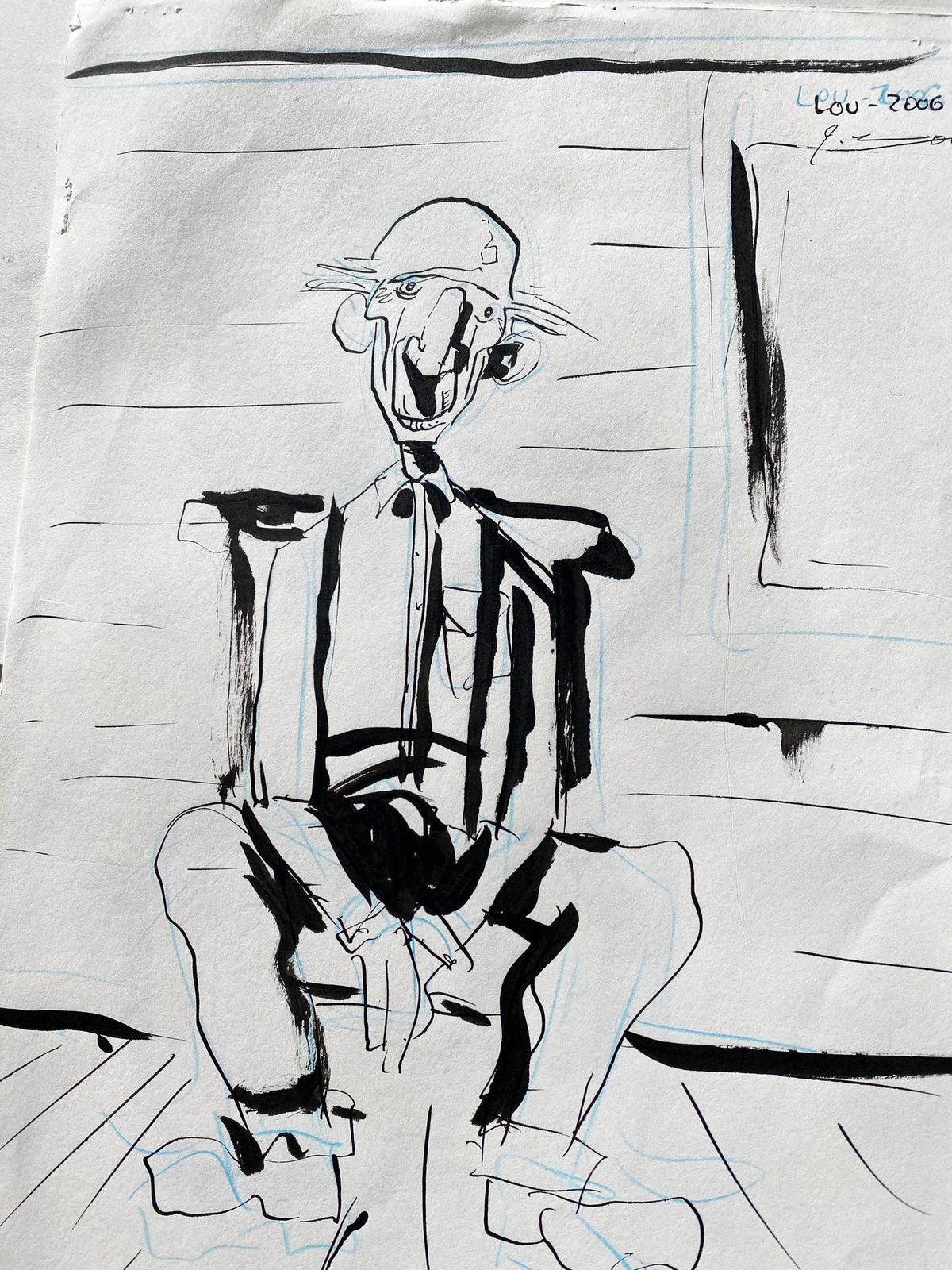



This was so great to read Jeff! I feel like I’m in between your lost dogs stage and making Essex stage. It’s so great to know I’m not alone :)
I'm curious if being a writer/artist was always the plan, because it seems all the more personal stuff you draw yourself (Essex County, Sweet Tooth, etc), and the books that maybe are superheroes or genre others draw to your writing (Descender, Gideon Falls, etc). Is this a conscious decision?